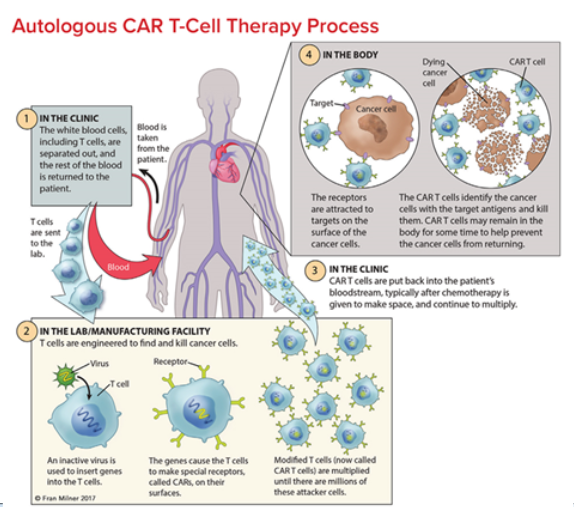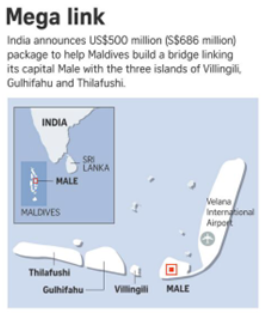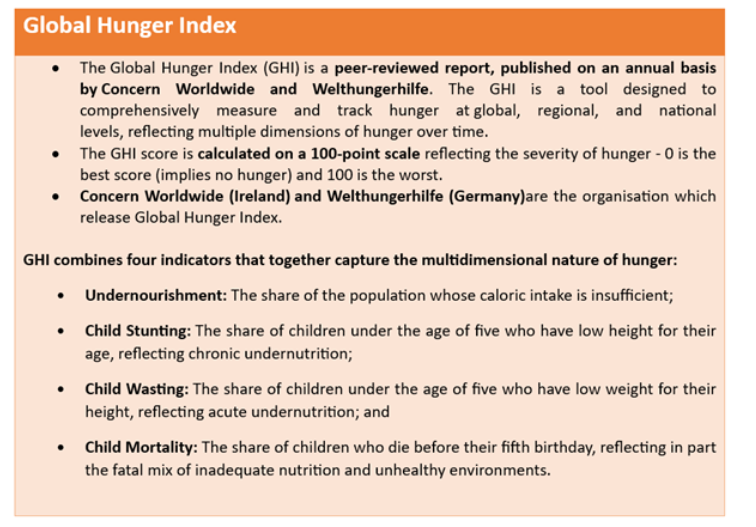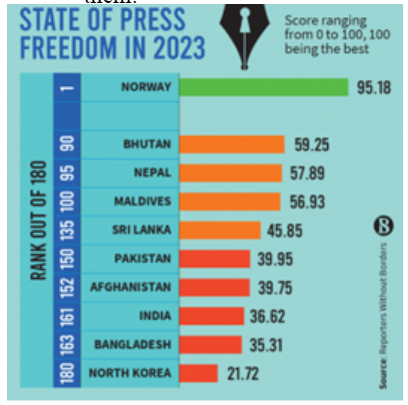Wednesday, 18th October 2023
Consanguinity - Edukemy Current Affairs
In News: Recently, newly conducted research has investigated the impact of intermarriage within families on genetic factors and health outcomes. New research sheds light on how this common practice influences susceptibility to diseases and the emergence of human characteristics across diverse populations worldwide.
About
- Consanguinity is both a social and genetic concept, it refers to a reproductive relationship between two closely related individuals. The degree of relatedness between two individuals defines the proportion of genes shared between them.
- The offspring of consanguineous couples are at increased risk for autosomal recessive disorders due to their increased risk for homozygosity by descent.
- Consanguinity can complicate pedigree analysis when a provider is unaware of the presence of consanguinity at the time they are evaluating the pedigree, and what appears to be an autosomal dominant inheritance pattern is associated with an autosomal recessive disease phenotype.
Key Takeaways from the Studies Related to Consanguinity
- 15-20% of the world's population practices consanguinity, with higher prevalence in regions like Asia and West Africa.
- India has more than 4,000 endogamous groups where people marry within the same caste/tribe or group, making it a fertile ground for consanguinity studies.
- Consanguinity has increased mortality rates and the prevalence of recessive genetic diseases in populations where it is practiced.
Benefits of Consanguinity
- Preservation of Cultural and Social Traditions: In certain societies, marrying within the family upholds longstanding traditions, ensuring the preservation of cultural and social norms.
- Social Safety Net: Consanguineous relationships create a built-in social safety net, as close relatives are more likely to provide support during financial, emotional, or medical crises, reducing reliance on external social services.
- Reduced Risk of Incompatibility: Marrying close relatives can reduce the risk of incompatibility concerning cultural, religious, or social backgrounds, fostering more stable marriages.
- Genetic Improvement in Animal and Plant Breeding Programs: In controlled breeding environments, mating closely related individuals is a widely used technique to eliminate harmful genetic traits and enhance desirable qualities in plants and animals. This contributes to better agricultural yields and imroved livestock quality through selective breeding.
Challenges of Consanguinity
- Increased Risk of Genetic Disorders: The most significant challenge of consanguinity is the heightened risk of offspring inheriting genetic disorders due to the sharing of common recessive genes, leading to a higher prevalence of conditions like cystic fibrosis.
- Limited Genetic Diversity: Marrying close relatives can result in limited genetic diversity within the population, potentially reducing overall resilience to diseases and environmental changes.
- Complex Family Dynamics: In consanguineous families, complex family dynamics can emerge, with multiple roles and relationships intersecting, potentially causing conflicts and tensions related to decision-making and family hierarchies.
- Potential Erosion of Individual Autonomy: Closely-knit consanguineous communities may witness an erosion of individual autonomy, as family and community influence decisions related to marriage, family planning, and other life choices, potentially limiting personal freedom.
- Silenced Voices in Domestic Violence Cases: In consanguineous relationships, women may be discouraged from reporting domestic violence due to familial and cultural pressures to preserve family respect. This silence can perpetuate the cycle of abuse, making it challenging to seek help or intervention in cases of domestic violence.
Balancing Reproductive Autonomy and Unborn Child's Rights
In News: The Supreme Court of India has recently declined to grant permission for the termination of a 26-week pregnancy for a married woman, as per the stipulations outlined in the Medical Termination of Pregnancy (MTP) Act of 1971.
About Judgement
- Supreme Court expressed reluctance to order a medical termination when the pregnancy is viable and does not pose an immediate threat to the woman's life. Court decision is grounded in the interpretation of Section 5 of the MTP Act, 1971, which allows abortion only if the woman's life and health are in immediate danger.
- SC Bench emphasized that a woman cannot claim an "absolute, overriding right" to abort, particularly when medical reports confirm that the pregnancy doesn't pose immediate danger to her life or that of the fetus.
- CJI distinguished the term 'life' in Section 5 of MTP Act, 1971 from its broader usage in Article 21 of the Constitution, emphasizing its application to life-and-death situations.
- Article 21 protects an individual's fundamental right to a dignified and meaningful life.
Government Stance
- The government asserts that a woman's reproductive autonomy should not infringe upon the rights of her unborn child.
- It points to the Medical Termination of Pregnancy (Amendment) Act of 2021, which extended the abortion deadline to 24 weeks in cases of substantial fetal abnormalities.
- The government believes that once a viable baby is present, relief should not be one-sided, and the woman's right to bodily autonomy should not exceed the Act's provisions.
- It argues that a woman's fundamental right to choice can be subject to limitations.
Implications and Challenges
- The case raises fundamental questions about women's reproductive rights, particularly in the later stages of pregnancy, and the ethical considerations surrounding abortion.
- Legal experts and advocates hold varying opinions on whether there should be an absolute right to terminate a pregnancy, especially in the absence of fetal abnormalities.
- This complex legal and ethical dilemma highlights the necessity for further discourse and clarity on reproductive rights in India.
- The case also underscores the challenges women encounter in accessing legal abortion services in the country.
Legal Provisions Related to Abortion in India
- Introduction of Legal Abortion
- Until the 1960s, abortion was illegal in India.
- The Shantilal Shah Committee was established in the mid-1960s to assess the need for regulations regarding abortion.
- In response, the Medical Termination of Pregnancy (MTP) Act of 1971 was enacted, legalizing safe abortions and safeguarding women's health.
- Medical Termination of Pregnancy (MTP) Act, 1971
- The MTP Act, 1971, permits licensed medical professionals to perform abortions in specific predetermined situations as provided under the legislation.
- Amendments in 2021
- The MTP Act was amended in 2021, allowing certain categories of women, such as rape victims, minors, mentally ill women, etc., to obtain abortions up to 24 weeks of gestation, an increase from the previous limit of 20 weeks.
- State-Level Medical Boards
- The MTP Act establishes state-level Medical Boards to determine if a pregnancy may be terminated after 24 weeks in cases of substantial fetal abnormalities.
- Protection of Women's Rights
- The MTP Act also emphasizes the protection of women’s privacy, confidentiality, and dignity in accessing safe abortion services.
- Preconception and Prenatal Diagnostic Techniques (PCPNDT) Act, 1994
- The PCPNDT Act, 1994, aims to prohibit sex-selective abortions and regulate the use of prenatal diagnostic techniques for detecting genetic or chromosomal abnormalities in the fetus.
- Constitution of India
- The Constitution of India guarantees the right to life and personal liberty to all citizens under Article 21.
- The Supreme Court of India has interpreted this right to include the right to reproductive choice and autonomy for women, reinforcing the legal framework for abortion rights in the country.
Gandhi's Stance on Jewish Nation-State in Palestine
Why in News: Due to the recent war between Israel and Palestine, the opposition of Mahatma Gandhi to a Jewish nation-state in Palestine has been the subject of debate in recent time.
Gandhi’s feelings towards the Jewish People:
- He had deep sympathies for the Jewish people who had historically been unjustly persecuted for their religion.
- He linked the condition of untouchables in India to that of Jews in Europe, highlighting the harsh treatment given to both groups.
- He declared that for the cause of humanity and to prevent the persecution of the Jewish people, even a war with Germany would be “completely justified”.
Reasons for Gandhi’s opposition to a Jewish Nation-State in Palestine:
- Gandhi thought it was unethical and inhumane to have a Jewish nation-state in Palestine.
- He considered that displacing the local Arab population in order to create a Jewish homeland would be a crime against humanity.
- According to Gandhi, Jews could only establish themselves in Palestine "with the goodwill of Arabs" and they had to "forgo the British bayonet" in order to do so.
- He held that any religious deed, such as Jews returning to Palestine, should take place with the cooperation of Arabs rather than being imposed with a bayonet or bomb.
- He questioned if Jewish people who had already established themselves in other areas of the world would be happy about the prospect of being compelled to leave those places if Palestine became their only home.
Influence of Gandhi’s stance on India's Israel-Palestine Policy:
- Jawaharlal Nehru, India's first Prime Minister, was profoundly influenced by Gandhi's ideas and his own anti-imperialism, which helped to shape the developing nation's foreign policy for decades and resulted in India's vote against UN Resolution 181, which partitioned Palestine.
- Israel was recognised by India in 1950, but formal diplomatic ties were only established in 1992, under the administration of Prime Minister P V Narasimha Rao.
- One of the first non-Arab countries to recognise the Palestine Liberation Organisation (PLO) as the only representation of the Palestinians was India. India acknowledged Palestine as a state in 1988.
- However, as its strategic and economic goals changed over time, India's strategy also changed in various ways. India recently adopted a de-hyphenation policy, balancing its connections with Israel and Palestine, and favouring the Two-State Solution and the peaceful exercise of each country's right to self-determination.
|
UPSC CSE Previous Years Questions Prelims Q1. Consider the following statements: (2023) Statement-I: Israel has established diplomatic relations with some Arab States. Statement-II: The ‘Arab Peace Initiative’ mediated by Saudi Arabia was signed by Israel and Arab League. Which one of the following is correct in respect of the above statements? (a) Both Statement-I and Statement-II are correct, and Statement-II is the correct explanation for Statement-I (b) Both Statement-I and Statement-II are correct, and Statement-II is not the correct explanation for Statement-I (c) Statement-I is correct, but Statement-II is incorrect (d) Statement-I is incorrect, but Statement-II is correct Answer: (c) Q2. The term “two-state solution” is sometimes mentioned in the news in the context of the affairs of (2018) (a) China (b) Israel (c) Iraq (d) Yemen Answer: (b) Mains
|
India's First CAR-T Cell Therapy Approved
Why in News: Recently, the Central Drugs Standard Control Organisation (CDSO) has provided approval of the first humanized CD19-targeted Chimeric Antigen Receptor T cell (CAR-T cell) Therapy product called NexCAR19 (Actalycabtagene autoleucel) for use in cases of relapsed/refractory B-cell Lymphomas and Leukaemia in India.
NexCAR19 (Actalycabtagene autoleucel):
- The approval has been given to the IIT Bombay-incubated company Immuno Adoptive Cell Therapy (ImmunoACT).
- The ten-year collaboration between IIT Bombay and Tata Memorial Centre (TMC) produced NexCAR19, which has undergone extensive clinical research and translational studies.
- It is the first humanized CD19-targeted Chimeric Antigen Receptor T cell (CAR-T cell) Therapy product.
T Cells:
- White blood cells called T lymphocytes, sometimes referred to as T cells, are a key component of the immune response.
- As part of cell-mediated immunity, T cells assist the body in identifying and reacting to foreign substances such as viruses, bacteria, and aberrant cells such as cancer cells.
- The helper T cell and the cytotoxic T cell are the two main subtypes of T cells.
CAR T-cell Therapy:
- CAR T-cell treatments utilise the patient's own cells, as opposed to chemotherapy and immunotherapy, which both entail taking medications. They are modified in the lab to stimulate T-cells and specifically target tumour cells.
- Leukaemias (cancers developing from cells that make white blood cells) and lymphomas (cancers arising from the lymphatic system) have been approved for CAR T-cell treatment.
- Greater clinical efficacy is achieved with CAR T-cell treatments because they are even more focused than targeted drugs and directly activate the patient's immune system to combat cancer.
- T cells from a patient's blood are collected, and in a lab, the gene for a unique receptor that attaches to a certain protein on the patient's cancer cells is added. Chimeric antigen receptor (CAR) is the name of the unique receptor.
- The CAR T cells are grown in a lab and given to the patient by infusion in large quantities.
Challenges with the CAR T-cell Therapy:
- CAR T-cell therapy application has been severely constrained by how challenging it is to create them.
- The effectiveness can reach 90% in certain leukaemias and lymphomas, although it is much lower in other cancers.
- The introduction of CAR T-cell treatment in India could lead to financial difficulties.

|
UPSC CSE Previous Years Questions Prelims
(a) They protect the environmental allergens. body (b) They alleviate the body’s pain and inflammation. (c) They act as immunosuppressants in the body. (d) They protect the body from the diseases caused by pathogens. Answer: (d) |
India and Maldives ties - Edukemy Current Affairs
Exam View: India and Maldives ties; Issues in Maldives.
Context: The President designate of Maldives, Mohamed Muizzu, is unlikely to take drastic measures that alter relations with India. China’s entry in Maldives is solely to advance its own gains. A strong relationship with India will be to Maldives's benefit.
Decoding the editorial: India and Maldives ties
- Historical: Earlier, there was only Buddhism in Maldives which was replaced in the 12th century by Islam.
- Even during the British protectorate years (1887-1965), Maldives depended on India for essentials as well as communication with the outside world.
- From Maumoon Abdul Gayoom’s years till today, the relations, despite a few hiccups, have been close and friendly.
- Geographic: Maldives has an area of 90,000 sq km that encompasses 99.6 percent of the sea.
- The remaining land is distributed over more than 1,200 islands.
- Experts predict that 80 percent of the Maldives will cease to exist by 2050 due to “Global Boiling”.
- India is the closest neighbour at a distance of 70 nautical miles, who could come to assist Maldives in an hour of need.
- Economic: The State Bank of India was the major financer that helped build the edifice of the country’s tourist economy. Even today, it is the largest bank in the island country.
- The dependence of Maldives on India and its unconditional support, has helped it become a country with the highest per capita in south Asia.
- Whether it is trade or tourism, India remains the biggest partner.
- Strategic: The defence cooperation includes gifting of helicopters and capacity building through joint exercises like the Ekuverin, Ekatha, surveillance assets, training of 1,400 MNDF trainers and disaster management.

-
- For decades, India has provided effective security assistance to Maldives in exchange of its hand of friendship and trust.
- In three different crises in 1988 (the coup), 2004 (the tsunami), and 2014 (water shortage), Maldives witnessed that India was the first one to assist it.
- With projects like greater Male connectivity, India is committed to take the infrastructure in Maldives to a different level altogether.
- For India, Maldives is a first line of defence against terrorism, piracy on the high seas, drug trafficking, narcotics, and other maritime crime.
- Social: Indian teachers and doctors play a critical role in the country including in the remote inhabited islands.
- India provides most essential items in bulk like rice, wheat flour, sugar, potatoes and onions, eggs, vegetables and even river sand and construction material as special dispensation.
Issues in Maldives
Maldives with 98 percent literacy is a nation of contradictions and these pose challenges to democratic governance.
- A constitution that bars anyone non-Sunni to become a Maldivian citizen;
- A nascent civil society;
- A tradition of patronage;
- A problem of increasing drug abuse;
- A distorted labour market;
- Growing inequality;
- An economy dependent on external factors;
- Growing trend of religious extremism.
- China angle
- China’s entry is solely to advance its own interests.
- It has done so through debt financing, leading to debt traps and consequent hegemony of China.
- China’s policy of interference in the internal politics and support to conservative elements in Maldives has the potential of becoming a barrier to the development of a vibrant democracy in Maldives.
Any impulsive steps to undo the carefully nurtured all encompassing partnership with India is likely to harm Maldives more than it would India. The 2012 “GMR out” campaign cost Maldives a $ 270 million in payout to GMR. The Yameen years were marred by a pro-China policy that led Maldives into a debt crisis.
Share the article
Edukemy’s Current Affairs Quiz is published with multiple choice questions for UPSC exams
MCQ
Get Latest Updates on Offers, Event dates, and free Mentorship sessions.

Get in touch with our Expert Academic Counsellors 👋
FAQs
UPSC Daily Current Affairs focuses on learning current events on a daily basis. An aspirant needs to study regular and updated information about current events, news, and relevant topics that are important for UPSC aspirants. It covers national and international affairs, government policies, socio-economic issues, science and technology advancements, and more.
UPSC Daily Current Affairs provides aspirants with a concise and comprehensive overview of the latest happenings and developments across various fields. It helps aspirants stay updated with current affairs and provides them with valuable insights and analysis, which are essential for answering questions in the UPSC examinations. It enhances their knowledge, analytical skills, and ability to connect current affairs with the UPSC syllabus.
UPSC Daily Current Affairs covers a wide range of topics, including politics, economics, science and technology, environment, social issues, governance, international relations, and more. It offers news summaries, in-depth analyses, editorials, opinion pieces, and relevant study materials. It also provides practice questions and quizzes to help aspirants test their understanding of current affairs.
Edukemy's UPSC Daily Current Affairs can be accessed through:
- UPSC Daily Current Affairs can be accessed through Current Affairs tab at the top of the Main Page of Edukemy.
- Edukemy Mobile app: The Daily Current Affairs can also be access through Edukemy Mobile App.
- Social media: Follow Edukemy’s official social media accounts or pages that provide UPSC Daily Current Affairs updates, including Facebook, Twitter, or Telegram channels.






